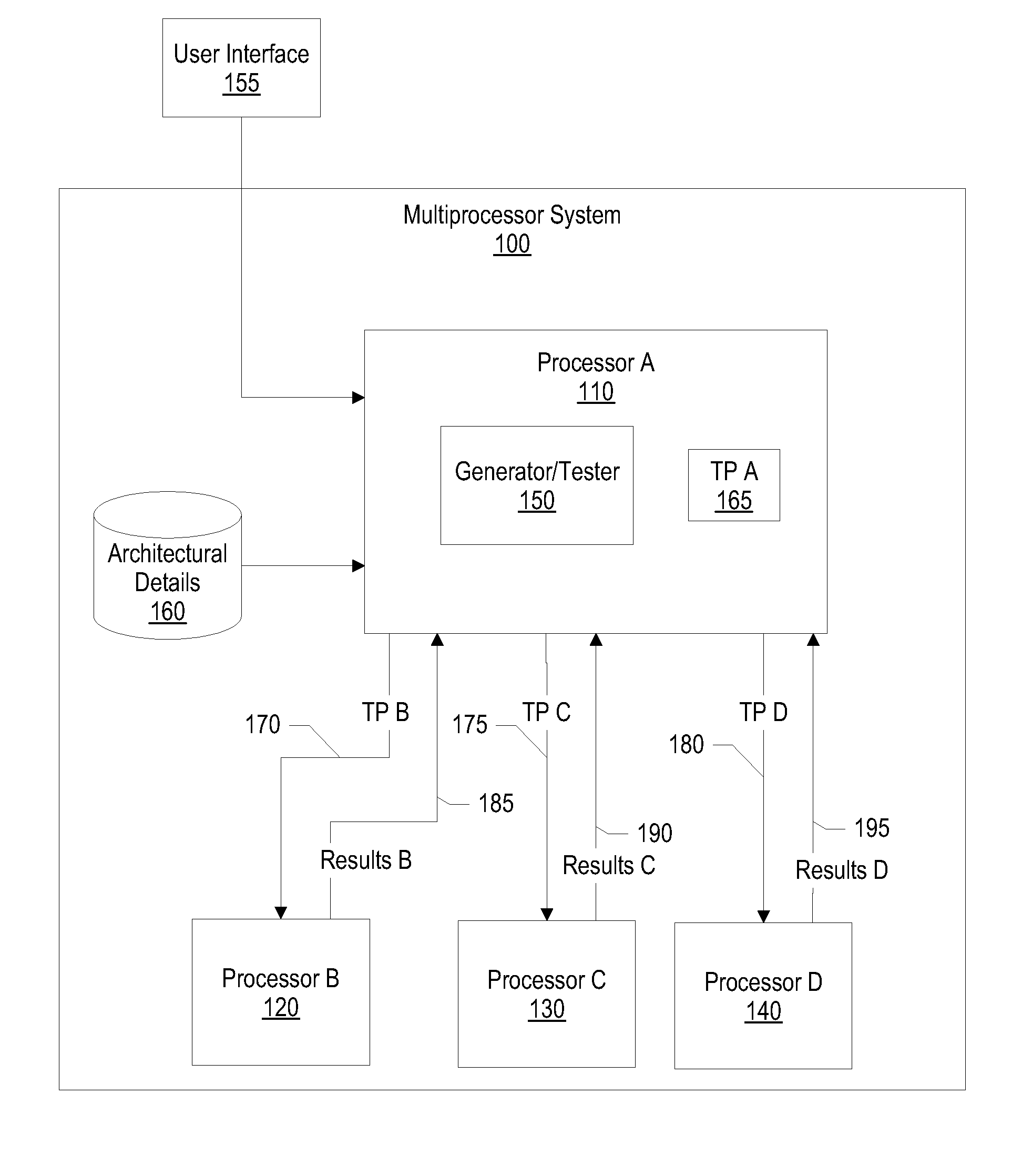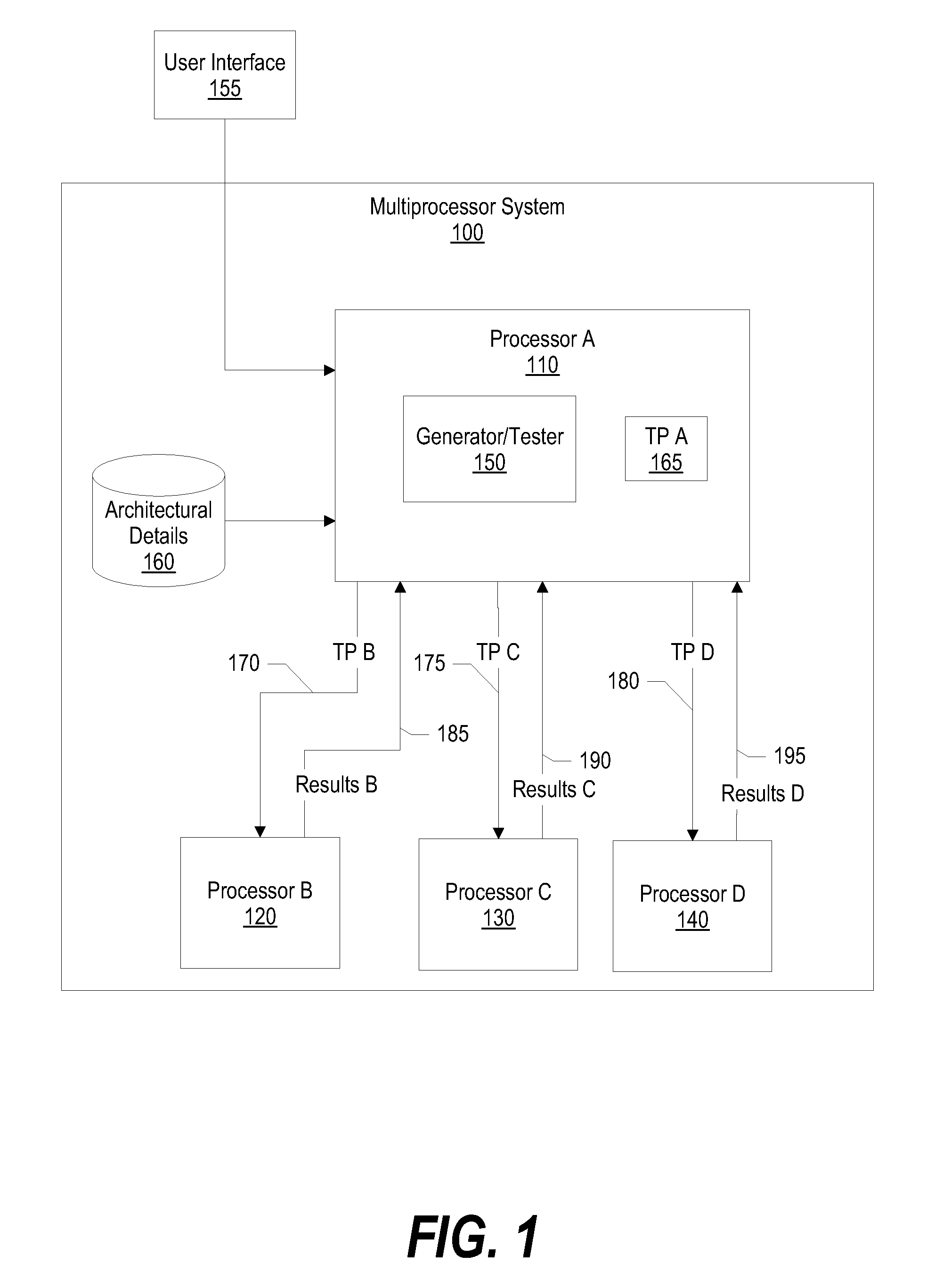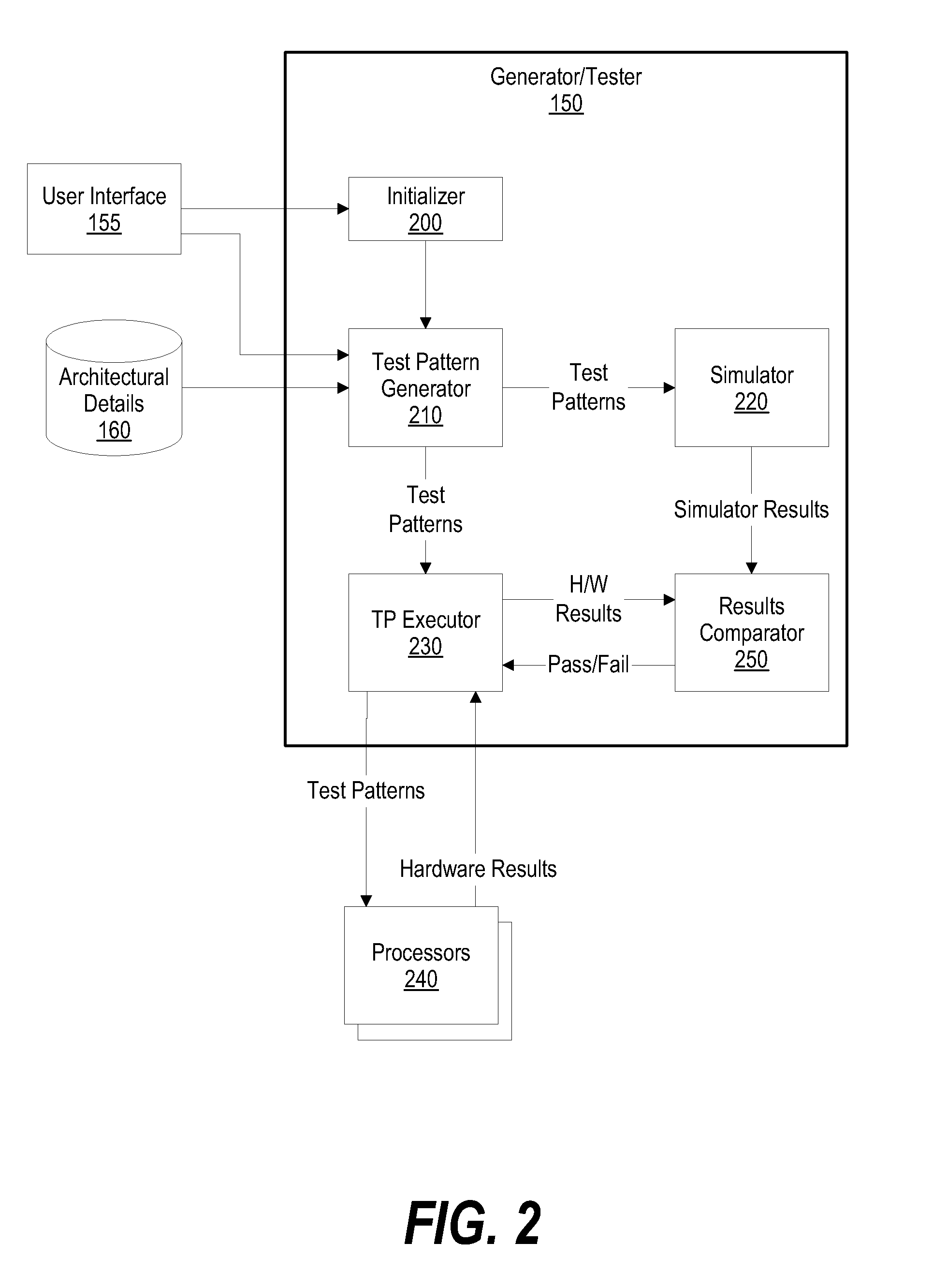System and Method for Pseudo-Random Test Pattern Memory Allocation for Processor Design Verification and Validation
a technology of design verification and memory allocation, applied in the field of system and method for pseudo-random test pattern memory allocation for processor design verification and validation, can solve the problems of complex test scenarios during processor execution, insufficient test coverage,
- Summary
- Abstract
- Description
- Claims
- Application Information
AI Technical Summary
Benefits of technology
Problems solved by technology
Method used
Image
Examples
first embodiment
[0049]In a first embodiment, test pattern generator 500 generates one test pattern for executing a particular number of times on a processor. In this embodiment, test pattern generator 500 provides the test pattern to test pattern simulator 510 that, in turn, simulates the test pattern and returns simulation results (simulation error detection check values, such as CRC values) to test pattern generator 500. Test pattern generator 500 then provides the test pattern, along with the simulation error detection check values, to test pattern executor 520, which provides them to scheduler 530. Scheduler 530 schedules the test pattern to dispatcher 540, which dispatches the test pattern to processor 550.
[0050]Continuing with the first embodiment, processor 550 executes the test pattern and provides hardware results to results comparator 570, such as a CRC comparator. Scheduler 530 instructs results comparator 570 to compute hardware error detection check values using the hardware results, a...
second embodiment
[0051]In a second embodiment, test pattern generator 500 generates a set of “n” test patterns per processor for executing a particular number of times on a plurality of processors (see FIGS. 6, 7, and corresponding text for further details). In this embodiment, test pattern generator 500 provides the test patterns, for processor 550, to test pattern simulator 510 that, in turn, simulates the test patterns and returns simulation results (simulation error detection check values) to test pattern generator 500. In turn, test pattern generator 500 provides the test patterns, along with the simulation results, to test pattern executor 520, which provides them to scheduler 530. Scheduler 530 schedules one of the test patterns to dispatcher 540, which dispatches the test pattern to processor 550.
[0052]Continuing with the second embodiment, processor 550 executes the test pattern and provides hardware results to results comparator 570. Scheduler 530 instructs error detection check comparator...
third embodiment
[0053]In a third embodiment, test pattern generator 500 generates a test pattern that is independent of initial data values. In this embodiment, test pattern generator 500 provides the test pattern, along with an initial set of data values, to test pattern simulator 510. Test pattern simulator 500 simulates the test pattern and produces a simulation result (simulation error detection check values). Test pattern simulator 510 then uses the simulation results as input values for a second test pattern execution round. Test pattern simulator 510 continues to simulate the test pattern and use the test pattern's simulation results as input data values for a next simulation for a particular number of times. Finally, test pattern simulator 510 provides the simulation results of all successive simulations to test pattern generator 500.
[0054]Continuing with this embodiment, once test pattern simulator 510 has simulated the test pattern a particular number of times, test pattern generator 500 ...
PUM
 Login to View More
Login to View More Abstract
Description
Claims
Application Information
 Login to View More
Login to View More - R&D
- Intellectual Property
- Life Sciences
- Materials
- Tech Scout
- Unparalleled Data Quality
- Higher Quality Content
- 60% Fewer Hallucinations
Browse by: Latest US Patents, China's latest patents, Technical Efficacy Thesaurus, Application Domain, Technology Topic, Popular Technical Reports.
© 2025 PatSnap. All rights reserved.Legal|Privacy policy|Modern Slavery Act Transparency Statement|Sitemap|About US| Contact US: help@patsnap.com



